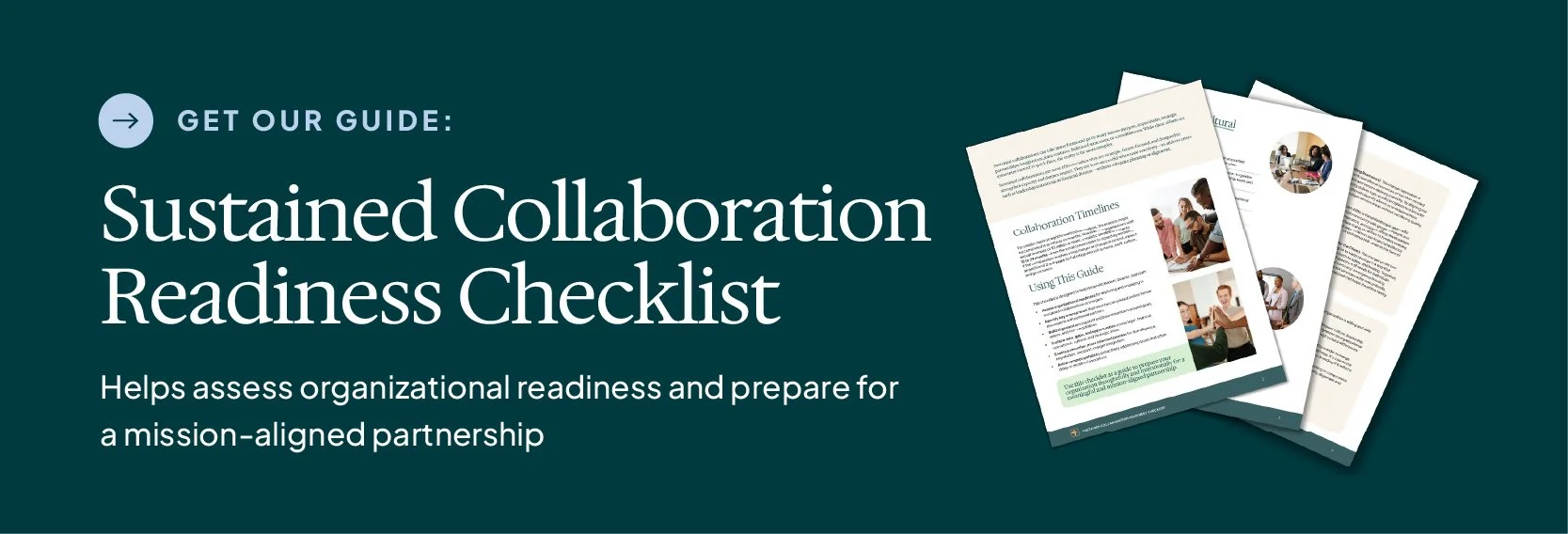How to Handle Resistance to Strategic Collaboration and Engage Naysayers as Champions of Change
In every strategic collaboration, there’s a moment when resistance surfaces. A board member raises concerns. A staff leader questions the timing. A long-time supporter wonders if the mission is being compromised.
These moments can feel like roadblocks—but they’re actually signposts. Resistance isn’t a threat to change. It’s a signal. And when handled with care, it can become a powerful source of alignment and trust.
Why Resistance Matters
Resistance often comes from people who care deeply. They’ve invested time, energy, and heart into the organization. Their skepticism isn’t apathy, it’s attachment. And that makes them valuable.
When naysayers are invited into the process, they bring perspective, rigor, and accountability. They ask the hard questions others may avoid. They surface risks that need addressing. And when they shift from opposition to support, they become some of the most credible champions of change.
Turning Resistance into Engagement
1. Identify Opinion Leaders Early
Every organization has informal influencers—people whose opinions carry weight, regardless of title. These individuals can amplify trust or sow doubt. Engaging them early, even if they’re skeptical, is a strategic move.
ASK: Who do people listen to when they’re unsure? Who shapes the internal narrative?
2. Invite, Don’t Isolate
It’s tempting to sideline resistance. But exclusion breeds deeper mistrust. Instead, invite skeptics into planning conversations, working groups, or exploratory committees. Give them a meaningful role—not just a seat at the table.
ASK: How can we make space for dissenting voices in a way that feels respectful and constructive?
3. Listen Without Defensiveness
When concerns are raised, resist the urge to immediately explain or correct. Listen to understand. Validate the emotion behind the concern. Often, people need to feel heard before they can hear you.
ASK: What’s underneath this resistance? Is it fear, loss, uncertainty?
4. Communicate Transparently and Often
Ambiguity fuels resistance. Clear, consistent communication, especially about what’s known, what’s unknown, and what’s still evolving—helps reduce anxiety. Share updates, invite feedback, and acknowledge complexity.
ASK: Are we communicating in a way that builds trust, not just conveys information?
5. Celebrate Shifts in Perspective
When a skeptic begins to see the value of the collaboration, acknowledge it. Not as a victory, but as a shared milestone. Their journey can inspire others who are still unsure.
ASK: How can we honor the courage it takes to change one’s mind?
A Culture That Welcomes Resistance
Strategic partnerships thrive in cultures where disagreement isn’t feared, it’s welcomed. Where hard questions are seen as signs of engagement. Where leaders model curiosity, humility, and a commitment to shared purpose.
Resistance isn’t the opposite of buy-in. It’s often the path to it.
Together, we are stronger.
If you’re interested in strategic collaboration or balancing your mission and business strategies, we’re here to help.
Mission + Strategy is an invested thought partner to your nonprofit organization. Through our Strategic Advising, Mergers & Partnerships, and Shared Back Office service solutions, we help nonprofits achieve alignment between their mission and business strategies.











